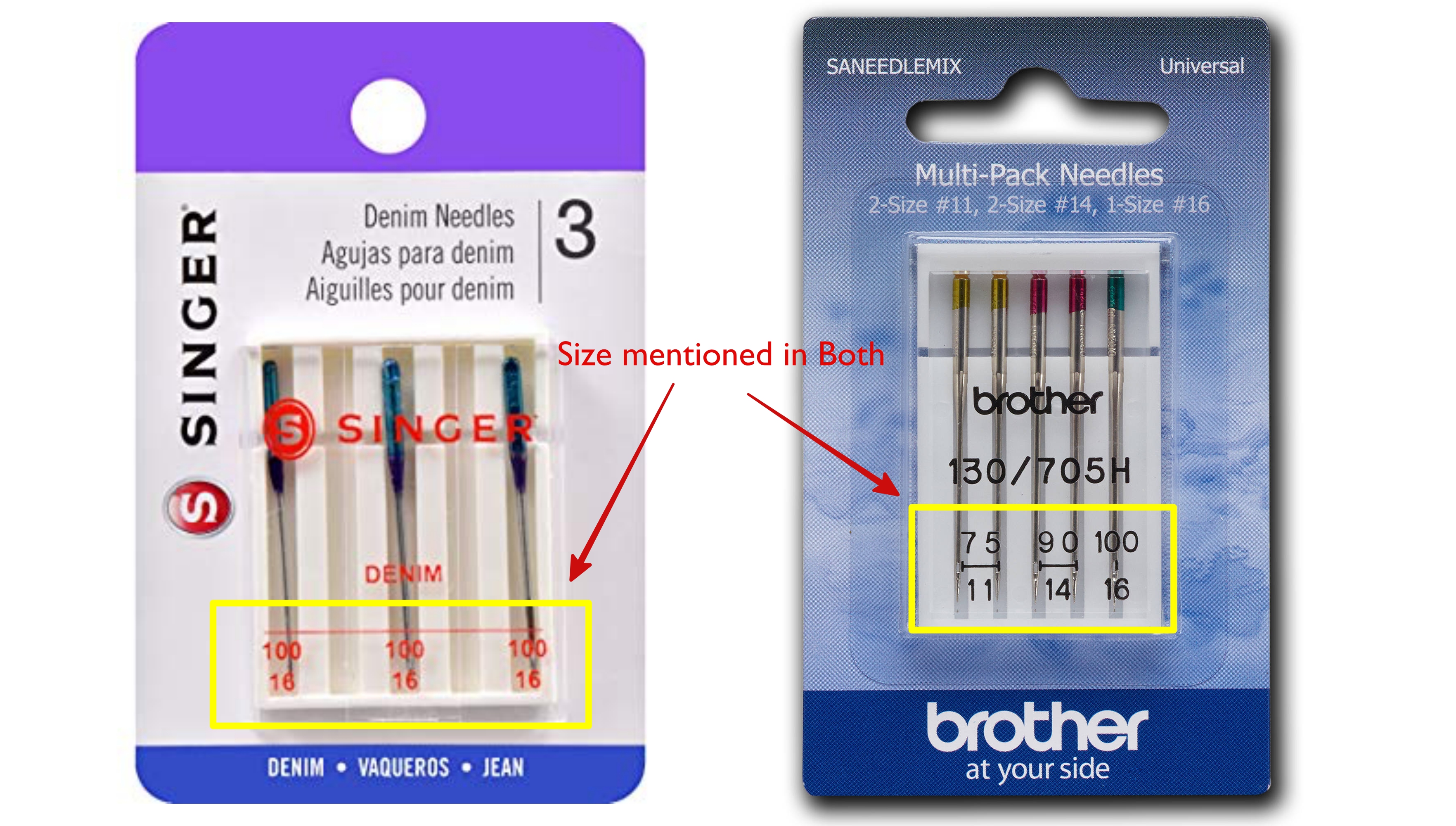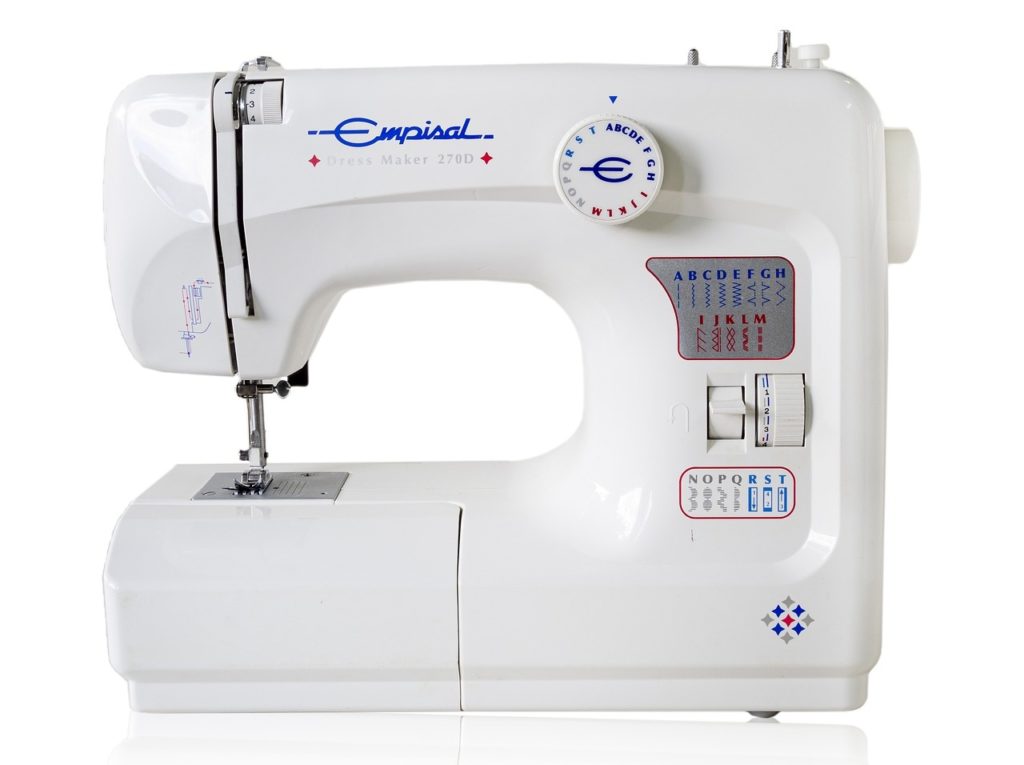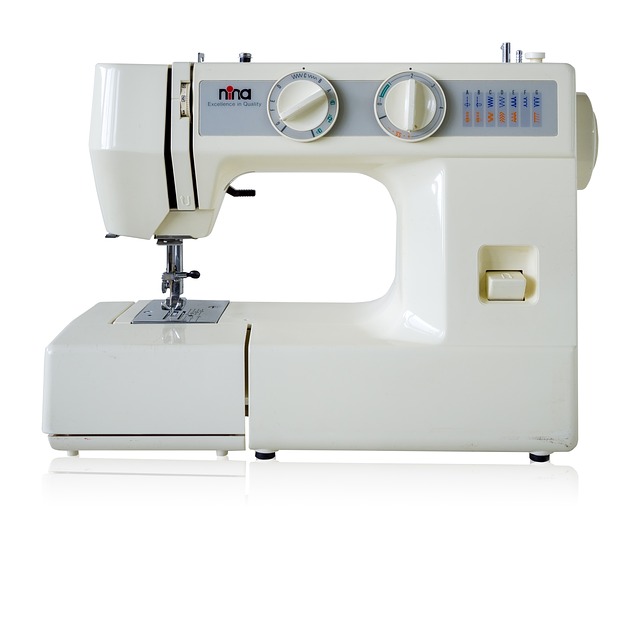The needle of your sewing machine is the least expensive component yet the most important one. Without the needle, you wouldn’t be able to make even a single stitch.
Every sewist must have some knowledge about the sewing machine’s needle because the wrong selection of needles can result in problems like uneven stitching, shredded thread, or even can cause permanent damage to your sewing machine.
Don’t let this happen to you!
Choose the right needle type/size as you sew different fabrics.
If you are not sure about the sizing and type of sewing machine needles, read this post till the end, I’ll educate you with all the necessary information you need to know a needle.
Before we move ahead and see what type of sewing machine needles you need to work on different fabrics, you must understand the anatomy of the needle.
Also see: Best sewing machine for quilting
The below image depicts important parts of a sewing machine on the left and on the right side, you can see the types of needles that you should use when working on a specific fabric.
You required separate types of sewing machine needles if you have to sew Jeans/Denim and leather.

Different Parts of a Needle
There are mainly 8 different parts of a sewing machine needle. Every single needle will have all these parts, so whether you are working on a light fabric like silk or a heavy material like denim, the sewing machine used for both of them has all these 8 important parts.
Let’s take a look.
Flat Side
The sewing machine needle has a flat and round side. The flat side is used to tightly attach the sewing machine needle to the needle bar with the help of a screw. The screw is tightened or loosened when we have to attach or remove the needle.
Round Side
The round side is the opposite side of the needle that helps with holding the needle tight in place with the needle bar.
Shank
The top of the needle till it gets thin, that part of the needle is called Shank. The Shank has two sides that I’ve explained above, Flat and Round sides. This is the part that we attach to the Needle bar with the help of a screw.
Shaft
In my view, the Shaft is the most important part of a needle because the thickness of the shaft varies with the type of needle.
If you sewing heavy fabric, you will need a thicker needle than you’d need for sewing light fabric. The shaft is the middle part of a needle that inserts into the sewing machine completely
Front Groove
The long front groove is helpful for the smooth supply of the thread at the time of stitching. The long groove is the part of the needle from the shoulder to the eye.
You can feel the groove by touching the needle with your nail. The Front Groove helps you thread the needle easily.
Scarf
Scart is yet another important part of the needle. It goes inside the bobbin and allows the bobbin case hook to cross-mix the threads supplied from the top and bobbin and thus stitches are formed.
Eye
The eye of the needle is a small hole that carries the thread and helps with creating a loop of the thread in order to form stitches.
The eye of the needle can be thin or wide based on the type of needle but it is always in line with the Front Groove that makes passing the thread through the eye easy.
Point
“Point” is the sharp (rounded) end of the needle that penetrates through two or more layers of the fabric to pass the thread being supplied from the top and intersect with the one supplied through the bobbin and form stitches.
Then needle “Points” have 3 most common types;
Sharp-
This type of needle has a Sharp point and is mainly used for Woven fabrics.
BallPoint-
That is commonly used for Knit Fabric and doesn’t have a sharp point.
Universal-
The Universal type of needles can be used for both Woven or Knit Fabric and have sharp points.
How to Choose Sewing Machine Needle Size
There are different types of fabric and you must test/know which sewing machine needle is the best fit for a particular type of fabric. It would haven’t been much confusing if there was only one Needle Sizing system.
There are two needle sizing systems…
However…

The thumb rule says the higher the number, the thicker/heavier is the needle, and vice versa. You will need a thinner sewing machine needle if you are working on light fabric and a thicker one for heavy material such as leather.
European Needle Sizing System
According to the European sewing machine needle sizing system, the size of the needle varies between 60 to 120 with 60 being the lightest sewing machine needle and 120 the heaviest. So if you are stitching a light sheer fabric, you’d need a needle size 60.
American Needle Sizing System
The American sewing machine needle system has altogether different sizes. As per the American system, the needle size varies between 8 to 19 with 8 being the lightest and 19 the heaviest sewing machine needle.
For a sheer fabric, you’d need a number 8 sewing machine needle, and for thick fabric such as leather, you will be needing a number 19 sewing machine needle.
Which Sewing Machine Needle size System Should I follow?
You can go for any of these as needle sizes because one system has its corresponding size in other systems.
For example, if you have a light fabric such as Sheer Fabric used for curtains, you can go for Needle size 8 as per American standard or size 60 as per the European standard. They both are equivalent to each other.
In fact, some of the sewing machine needle makers print both the sizes on the needle packs so that there is no confusion about the selection of needles.
Below are needle packets from SINGER & Brother Sewing Machine makes. Both of them have mentioned the size as per American as well as European standards.

Ideal Size of the Needle for different fabrics
Below is the ideal size of the needle for different fabrics.
Take a look!
| Fabric Type | Idea Needle Size |
| Lightweight Fabric such as Silk | 8/60 |
| Medium-weight Fabric as Linen, Velvet, etc. | 14/90 |
| Heavy Fabric as Coating | 16/100 |
Conclusion
Which needle size should you choose depends on the fabric. If you are sewing fabric like silk, you can go for a needle size 8/60, and for heavy fabric like Coating, Denim, the ideal needle size is 16/100.
However, the best practice to choose which needle size/type is good for a particular fabric is to test different needles.



